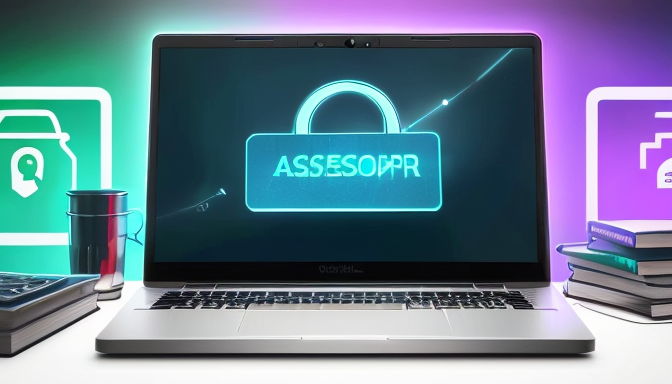In today’s digital age, staying safe online is more crucial than ever. With the internet being a vast ocean of information and interaction, it’s easy to feel lost and vulnerable. Imagine walking through a bustling city filled with hidden dangers; that’s what navigating the web can feel like without the right knowledge and tools. So, how do you protect yourself from the lurking threats? It starts with understanding the landscape of cybersecurity and taking proactive steps to safeguard your personal information.
First off, let’s talk about the importance of staying updated. Cyber threats evolve at lightning speed, and what was safe yesterday might not be secure today. Regular updates on cybersecurity threats can be your best friend. You wouldn’t ignore a warning sign in a busy street, right? Similarly, keeping an eye on the latest security tools and best practices will ensure you’re always one step ahead. Don’t underestimate the power of a well-informed user; knowledge is your armor in the digital realm.
Furthermore, consider implementing robust security measures. Using strong, unique passwords for every account is a fundamental step. Think of it as locking your doors with high-quality locks. Additionally, enabling two-factor authentication adds an extra layer of protection, making it significantly harder for cybercriminals to gain access. Remember, the more layers of security you have, the safer you are. Your online safety is in your hands, so take charge and navigate the web with confidence!
Understanding Cyber Threats
In today’s digital age, understanding cyber threats is crucial for anyone who ventures online. Imagine walking through a bustling city; while most people are friendly, there are always a few lurking shadows. Similarly, the internet is filled with potential dangers that can jeopardize your personal information and online safety. From malware that stealthily infiltrates your devices to phishing scams that trick you into revealing sensitive data, the threats are diverse and constantly evolving.
One of the most notorious forms of cyber threats is ransomware. This malicious software locks your files and demands payment for their release, leaving you in a state of panic. It’s like a digital hostage situation! To combat these threats, it’s essential to stay informed. Regular updates on cybersecurity can be your best defense. For instance, knowing the latest phishing tactics can help you recognize suspicious emails before they lead to disaster.
Here’s a quick overview of common cyber threats:
- Malware: Software designed to harm or exploit any programmable device.
- Phishing: Fraudulent attempts to obtain sensitive information by disguising as a trustworthy entity.
- Ransomware: A type of malware that encrypts your files and demands payment for the decryption key.
By familiarizing yourself with these threats and their implications, you can take proactive measures to protect yourself. Remember, knowledge is power, and in the realm of cybersecurity, it can mean the difference between safety and vulnerability.

Best Practices for Online Safety
In today’s digital landscape, staying safe online is more crucial than ever. With cyber threats lurking around every corner, it’s essential to arm yourself with the right knowledge and tools. So, how do you navigate this vast ocean of information while keeping your personal details safe? Well, let’s dive into some effective strategies that can help you maintain your online security.
First and foremost, strong passwords are your first line of defense. Think of your password as a key to your digital house; the stronger it is, the harder it is for intruders to break in. Aim for a mix of uppercase, lowercase, numbers, and special characters. Moreover, consider using a password manager to keep track of all your unique passwords securely.
Another vital practice is enabling two-factor authentication (2FA) wherever possible. This extra layer of security is like having a second lock on your door. Even if someone manages to get your password, they’ll need that second piece of information to gain access. It’s a simple step that can significantly enhance your security.
Additionally, staying informed about the latest cybersecurity threats is essential. Cybercriminals are constantly evolving their tactics, so keeping up with current trends can help you spot potential dangers before they become a problem. Regularly updating your software and devices is also crucial, as these updates often contain critical security patches.
In summary, by implementing these best practices—strong passwords, two-factor authentication, and staying updated—you can create a robust defense against online threats. Remember, your safety is in your hands!
Frequently Asked Questions
- What is the most common type of cyber threat?
Malware is often considered the most prevalent cyber threat. It can take various forms, including viruses, worms, and spyware, all designed to harm your device or steal your information.
- How can I create a strong password?
A strong password should be at least 12 characters long and include a mix of uppercase letters, lowercase letters, numbers, and symbols. Think of it like building a fortress—more layers mean better protection!
- What is two-factor authentication and why is it important?
Two-factor authentication (2FA) adds an extra layer of security by requiring not just your password but also a second piece of information, like a code sent to your phone. It’s like having a double lock on your door—harder for intruders to get in!
- How can I recognize phishing attempts?
Phishing attempts often come in the form of emails or messages that look legitimate but ask for personal information. Always check the sender’s email address and look for spelling errors or unusual links—think of it as spotting a fake ID!
- What should I do if I think I’ve been hacked?
If you suspect a hack, change your passwords immediately, enable 2FA, and monitor your accounts for unusual activity. It’s like putting out a fire—act fast to minimize the damage!